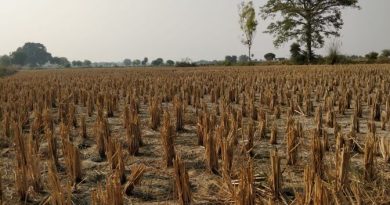Climate Change And The Locust Menace

If you thought climate change was only about slightly rising temperatures around you, then the lotus attacks we are witnessing in mor and more states of India should make you pause. Not only to these infestations have a direct relationship with rising temperatures, but many more such first and second order effects of climate change will rock regions, as the temperature rise continues.
While we believe this tweet thread by Amit Schandillia does a very good job of explaining the how and why, we need to worry about the what, or implications of these attacks too.
[THREAD: THE LOCUST PLAGUE]
1/26
All that happens in S. Asia and Aus. directly or indirectly goes back to the fact that the Indian Ocean is landlocked on 3 sides with a narrow corridor between Indonesia and Australia connecting it with the Pacific. Everything includes locusts.— Amit Schandillia (@Schandillia) May 27, 2020
These large desert locust swarms can contain upto 150 million locusts in a swarm, and wipe out hectares of agricultural fields in a day. A ministry official from the Agriculture ministry has been quoted by The Wire as saying that ” it is possible that the locust swarm could impact the kharif (summer) crop. “For one, it could destroy the early kharif crop now and then in June and July. It could also have another impact, which is that farmers who are worried about the loss due to locusts, might not sow or might sow less than what they usually would. So, the total production could reduce because of both these factors. That is why it is essential to control these swarms right now”.
Coming at a time when the agri sector was the one bright spot for the economy, the invasion couldn’t have come at a worse time. On the other hand, there are hopes that with the local administration geared up for sanitisation measures due to the Covid outbreak, some equipment for spraying is already in place in many places, and should help respond faster to the threat.
What has shocked officials about the attack this year is the timing and spread. While states like Rajasthan and Haryana have coped with attacks every few years, this year, not only have the warms come earlier, but favourable conditions have also seen them spread out as far as Gujarat and Madhya Pradesh. Over 500,000 acres of farming land has already been impacted in Rajasthan.
The saving grace? The Rabi crop (winter crop) was already harvested, and the Kharif crop is yet to be planted. Thus, the biggest risk is to horticulture and possible impact on planting of kharif crops.
In state after state, infrastructure to combat locusts invasions is either non existent or in disuse, due to lower frequency of attacks over the years. The revival seen since 2018, points to a new normal possibly, that will require a major international cooperation among impacted countries, including origin countries, to ensure the regions food security and economic hardships are not worsened any further by locusts.




